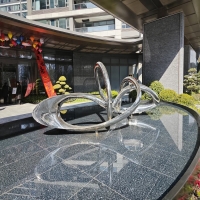Welcome to the website for landscape facilities products and knowledge.
How do landscape tables perform in terms of resistance to insect damage or fungal growth?
Landscape tables are a popular choice for outdoor spaces due to their durability and aesthetic appeal. One of their key advantages is their resistance to insect damage and fungal growth, making them a low-maintenance option for gardens, patios, and public areas.
Insect Resistance:
High-quality landscape tables are often made from materials like teak, cedar, or composite wood, which naturally repel insects. These materials contain oils or resins that deter termites, carpenter ants, and other wood-boring pests. Additionally, metal or plastic-based tables are inherently immune to insect infestations.
Fungal Growth Prevention:
Fungi thrive in moist environments, but landscape tables designed with proper drainage and weather-resistant finishes minimize water retention. Treated woods and synthetic materials resist mold and mildew, while regular sealing or coating further enhances protection.
Maintenance Tips:
To maximize resistance, clean tables periodically, apply protective sealants, and ensure proper airflow around the furniture. Choosing rot-resistant materials like redwood or composite can also extend longevity.
By selecting the right materials and maintaining them properly, landscape tables can remain insect- and fungus-free for years, offering both functionality and beauty in outdoor settings.
Related search:

Recommendation
Abstract art sculpture, stainless steel metal sculpture, large-scale water feature sculpture